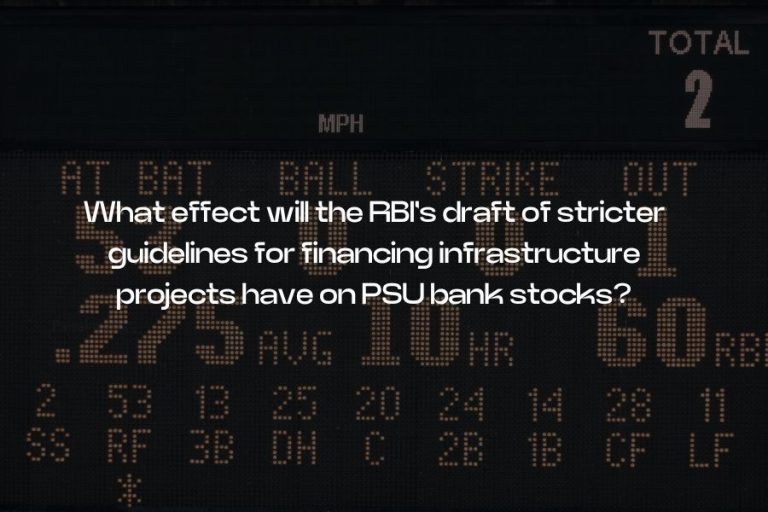The Reserve Bank of India (RBI) published a draft on May 6 that suggested stricter lending guidelines and closer oversight of infrastructure projects that were still under construction. This caused the share price of PSU banks to plummet in trading.
On May 3, the RBI asked lenders to guarantee stringent oversight of any rising stress and suggested that they set aside larger provisions for all ongoing infrastructure projects.
The Nifty PSU Bank index fell by almost 3.2 percent at 11:45 a.m. With declines of more than four percent, Punjab National Bank, Canara Bank, Bank of Baroda, and Union Bank were the index’s biggest laggards.
Because they concentrate on financing power projects, which account for a sizeable portion of the infrastructure sector, NBFCs like REC, Power Finance, and IREDA also saw a drop of up to 12 percent.
Lenders in the public sector are disproportionately affected since public banks are more likely to be involved in infrastructure loans.
The proposal was said in the RBI note to be “taking into account the experience of banks with regard to financing of project loans.”
Due to the national government’s efforts to stimulate the economy, infrastructure and industry projects in India are currently experiencing a boom.
However, there have been significant infrastructure loan defaults in the past, which put strain on the banking system and the local banking industry. The suggested guidelines by RBI aim to stop such incidents from happening again, considering the continuous focus on infrastructure spending.
What suggestions has the RBI made?
The RBI suggested that lenders keep aside five percent of the loan amount throughout the building phase of a project. This will drop to 2.5 percent after the project starts up.
Once the project has sufficient cash flow to meet its current obligations, the required provisions will be further reduced to one percent.
The five percent provision must be made by the lenders gradually; two percent must be made in FY25, 3.5 percent in FY26, and five percent by FY27.
Presently, on project loans that are neither past due or under stress, lenders must hold a provision of 0.4 percent.
The anticipated start date of a project’s commercial operations should also be clearly visible to banks, who should then make additional reserves in case such operations are delayed. If an infrastructure project is delayed for more than three years, the loan should be reclassified as stressed rather than standard.
For More Visit: https://paisainvests.com/blog/
Disclaimer: The articles on PaisaInvests.com are solely for educational purposes. While we endeavor for accuracy, we make no guarantees regarding completeness or reliability. Readers are advised to conduct their own research and seek professional advice before making any financial decisions. We are not liable for any loss or damage incurred from the use of information provided. Additionally, we do not control the content of external websites linked within our articles.



